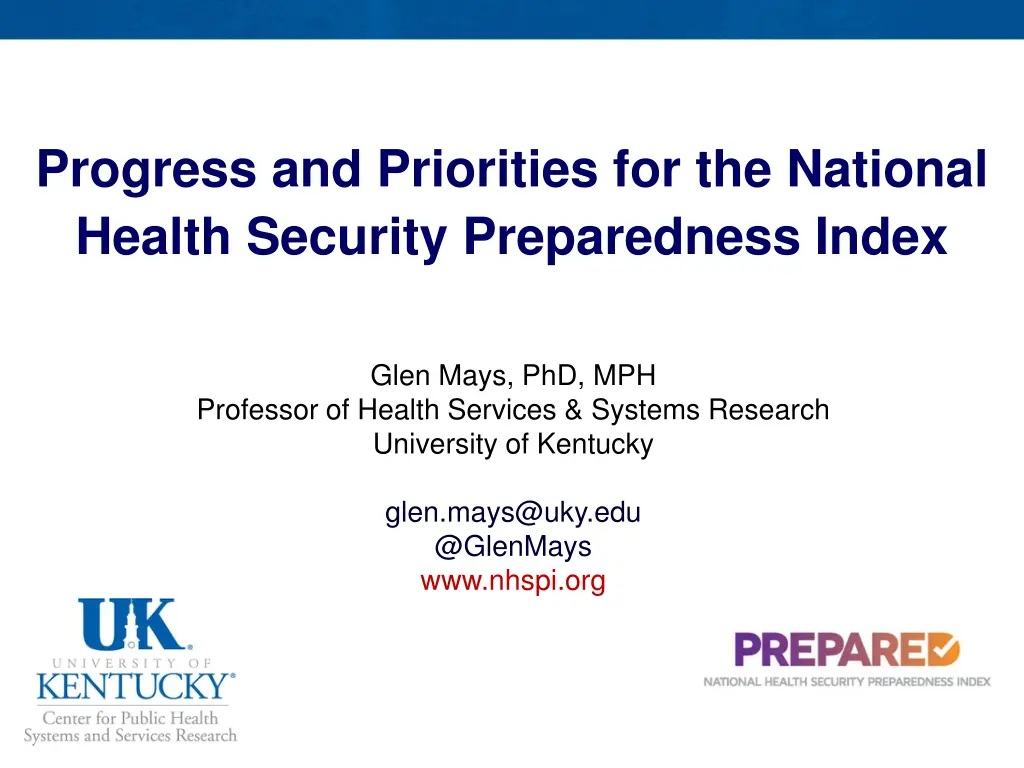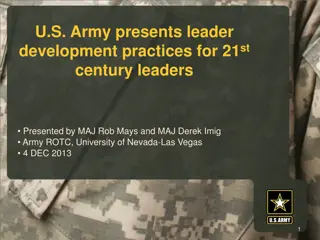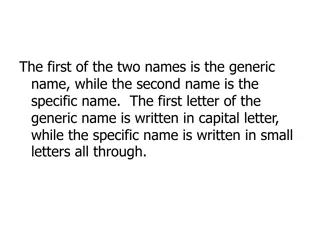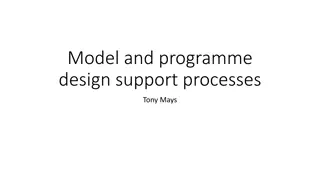
National Health Security Preparedness Index Progress & Priorities
Explore the progress and priorities of the National Health Security Preparedness Index led by Glen Mays, tracking national health security for shared responsibility across sectors. Discover why a Health Security Index is crucial, its historical development, and what the Index measures. Learn about the enhanced methodology utilized for assessing health security preparedness nationwide.
Download Presentation

Please find below an Image/Link to download the presentation.
The content on the website is provided AS IS for your information and personal use only. It may not be sold, licensed, or shared on other websites without obtaining consent from the author. If you encounter any issues during the download, it is possible that the publisher has removed the file from their server.
You are allowed to download the files provided on this website for personal or commercial use, subject to the condition that they are used lawfully. All files are the property of their respective owners.
The content on the website is provided AS IS for your information and personal use only. It may not be sold, licensed, or shared on other websites without obtaining consent from the author.
E N D
Presentation Transcript
Progress and Priorities for the National Health Security Preparedness Index Glen Mays, PhD, MPH Professor of Health Services & Systems Research University of Kentucky glen.mays@uky.edu @GlenMays www.nhspi.org
Why a Health Security Index? Track national progress in health security as a shared responsibility across sectors Raise public awareness Identify strengths and vulnerabilities Detect gains and losses Encourage coordination & collaboration Facilitate planning & policy development Support benchmarking & quality improvement Stimulate research & innovation An Equal Opportunity University
Many attempts, Few successes ASTHO Bioterrorism Accountability Indicators Project CDC Public Health Preparedness & Response Capacity Inventory An Equal Opportunity University
A Brief History Collaborative Development: CDC, ASTHO and >25 collaborating organizations 1st Release: Initial model structure and results 5 domains and 14 subdomains 128 measures 2nd Release: Revised model and results 6 domains and 18 active subdomains Measures: 119 retained + 75 new = 194 measures Transition to Robert Wood Johnson Foundation Validation studies and revision to methodology & measures 3rd Release: Revised model and results 6 domains & 19 active subdomains Measures: 65% retained, 12% respecified, 8 new = 135 total Valid comparisons over time + confidence intervals 4th Release: Refined model and results Added District of Columbia Measures: 4 dropped, 7 respecified, 8 new =139 total 2012 12/2013 12/2014 1/2015 4/2016 4/2017 An Equal Opportunity University
What the Index measures An Equal Opportunity University
Enhanced Methodology 139 individual measures Normalized to 0-10 scale using min-max scaling to preserve distributions Imputations based on multivariate longitudinal models Empirical weights based on Delphi expert panels Bootstrapped confidence intervals reflect sampling and measurement error Annual estimates for 2013-2016 Weighted average 19 subdomains Weighted average 6 domains Weighted average State overall values Reliability by Domain Alpha Unweighted average Health security surveillance 0.712 Community planning & engagement 0.631 National overall values Incident & information management 0.734 Healthcare delivery 0.596 Countermeasure management 0.654 Environmental/occupational health 0.749 An Equal Opportunity University
2017 Results Steady but slow progress *statistically significant change An Equal Opportunity University
2017 Results The U.S. improved in most domains during 2013-16, except healthcare delivery and environmental health *statistically significant change An Equal Opportunity University
2017 Results Geographic disparities in health security are large and persistent 2013 2014 2016 2015 An Equal Opportunity University Above average Within average Below average %Increase in year %Decrease in year
2017 Results Improvements occurred across the U.S., but 12 states trailed or lost ground Below national average Within national average Above national average 10 WI NC LA SD WV DE MA % Change from 2015 GA 5 TN OR MS MT IL PA WA CO MN ME VT AZ AL SC HI ID MI ND NJ UT CT NE NY RI VA AK NV WY OK IN OH TX AR FL MO IA DC NH MD 0 CA NM KY KS -5 6 6.5 7 7.5 8 2016 Index Value An Equal Opportunity University
2017 Results Changes vary widely across states and domains Lowest State | US Average | Highest State Index Values in 2013 and 2016 An Equal Opportunity University
2017 Results Health security tracks closely with social & economic determinants of health 20 NM KY MS LA GA Percent of population below federal poverty threshold AZ AL FL AR NC 15 TX WVTN OK SC KS NY Poverty Rate SD OH IN CA NV MI ID MT PA ME OR RI MA WA WI NJ IL ND DE HI VA VT IA NE 10 CO WY MO MD UT AK CT MN NH 5 5.5 6 6.5 2016 Index Value 7 7.5 8 TX .15 GA AK AZ MS OK FL NM Uninsured Rate Percent of population without health insurance coverage NV AL LA SC ID TN NC KS MT UT .1 WY SD IN AR MO CO VA CA NJ ND NE WA DE OR WI MD OH KY MI WV IL PA CT MN NY .05 HI IA NH ME RI VT DC MA 5.5 6 6.5 2016 Index Value 7 7.5 8 An Equal Opportunity University
2017 Results Rural-Urban differences in health security Percent of population residing in a state with below-average health security Relative Risk: 23%* *statistically significant difference An Equal Opportunity University
2017 Results Underlying drivers: occupational Percent of workers with paid sick leave and telecommuting opportunities * * *statistically significant change An Equal Opportunity University
2017 Results Underlying drivers: organizational Participation in Healthcare Preparedness Coalitions An Equal Opportunity University
2017 Results Underlying drivers: community and systems Communities with Strong Multi-Sector Networks (Comprehensive Public Health Systems) *statistically significant difference An Equal Opportunity University
Next Challenge: Supporting Meaningful Use If you build it, will they come? Substantial progress in media coverage & use Productive dialog with federal/policy stakeholders: CDC, ASPR, ASPE, GAO, OMB, NCSL BUT Limited engagement with state preparedness officials An Equal Opportunity University
Current Engagement Mechanisms Call for new measures Monthly workgroup meetings: methods, communications Public comment period on suggested enhancements (Oct) Delphi survey on measure importance (Nov-Dec) Pre-release state preview period (March) Quarterly webinars Preparedness Innovator Challenge (March-June) Data download, listserv, blogs, twitter To receive updates from the Health Security Index, email listserv@lsv.uky.edu with Subscribe NHSPIndex in the body www.nhspi.org An Equal Opportunity University
Caveats and cautions Imperfect measures & latent constructs Unmeasured capabilities Timing and accuracy of underlying data sources An Equal Opportunity University
On the horizon Exploratory work to include territories and sub-state metropolitan areas Tools and applications to support Index use Analyses to uncover causes and consequences of change in health security An Equal Opportunity University
National Advisory Committee Members | 2016-17 Thomas Inglesby, MD (Chair), Johns Hopkins University Robert Burhans, Health Emergency Management Consultant Anita Chandra, DrPH, RAND Mark DeCourcey, U.S. Chamber of Commerce Foundation Eric Holdeman, Emergency Management Consultant Harvey E. Johnson, Jr., American Red Cross Ana Marie Jones, Interpro Dara Lieberman, MPP, Trust for America s Health Nicole Lurie, MD, MSPH, ASPR (through 1/2017) Suzet McKinney, DrPH, MPH, Illinois Medical District Commission Stephen Redd, MD, CDC Office of Public Health Preparedness & Response Richard Reed, MSW, American Red Cross (through 2/2016) John Wiesman, DrPH, MPH, Washington State Secretary of Health Special appreciation to Index collaborators at CDC, ASPR, ASTHO, APHL, NACCHO, RAND, members of the Model Design and Analytic Methodology Workgroup, and the Stakeholder Engagement and Communications Workgroup. Visit or join an Index workgroup at http://nhspi.org/get-involved/ An Equal Opportunity University
For More Information National Program Office Supported by The Robert Wood Johnson Foundation Glen P. Mays, Ph.D., M.P.H. Email: NHSPI@uky.edu Web: www.nhspi.org www.systemsforaction.org Archive: works.bepress.com/glen_mays Blog: publichealtheconomics.org To receive updates from the Health Security Index, email listserv@lsv.uky.edu with Subscribe NHSPIndex in the body National Coordinating Center





